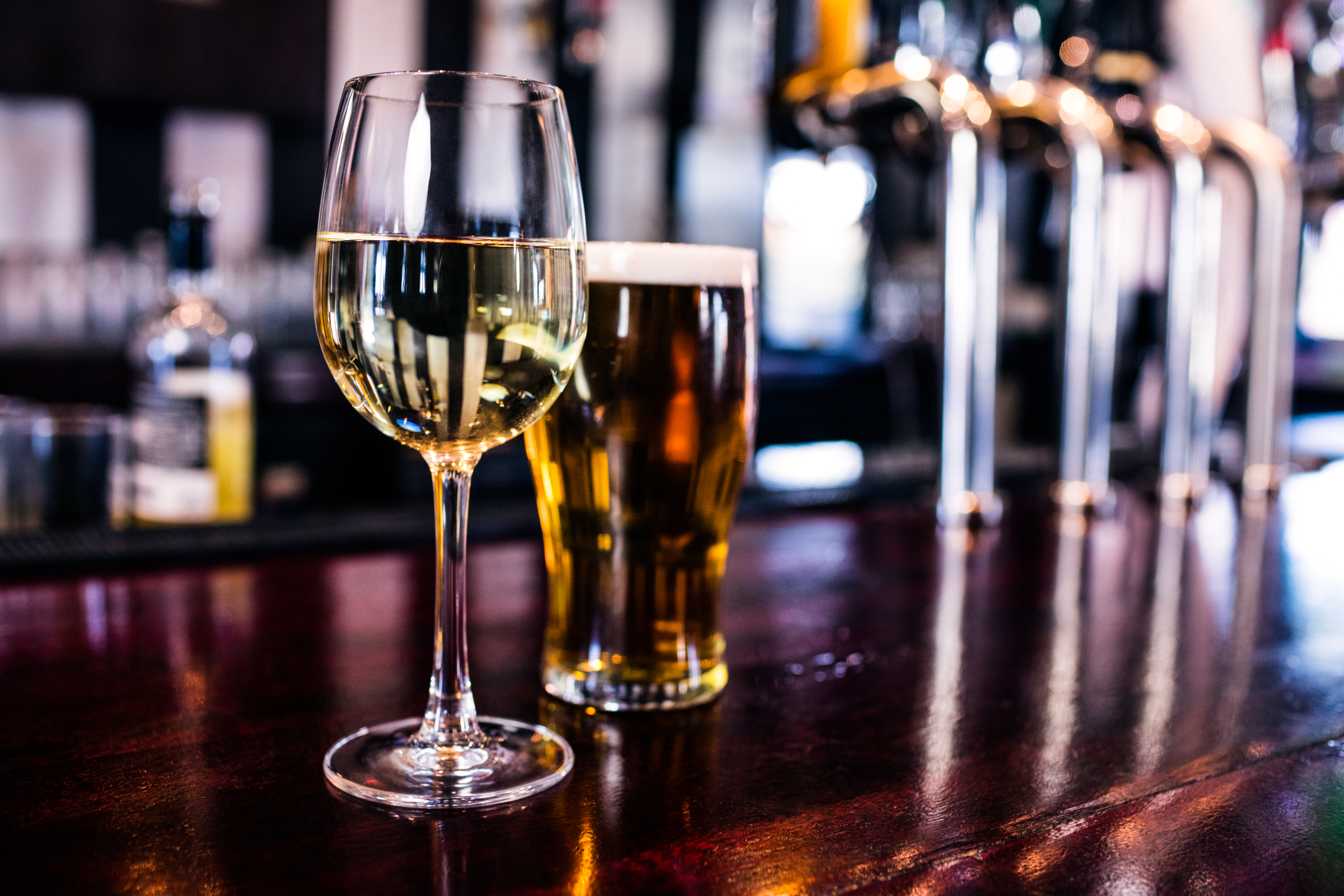
Apparently, this is an important question for people hoping to avoid hangovers — at least, it was important enough that researchers have published a study about it. And we may now have an answer.
Researchers enrolled 90 adults between the ages of 19 and 40, randomly assigning them to one of three groups:
- Group 1 drank beer until their breath alcohol level was at least .05%, then drank wine until it was at least .11%. That’s well over the limit of what can get you charged with drunk driving in the US.
- Group 2 drank wine until their breath alcohol level was at least .05%, then drank beer until it was at least .11%
- Group 3 was allowed to drink either only wine or only beer until their breath alcohol level was at least .11%
After a week or so, the experiment was repeated. This time, though, members of Groups 1 and 2 swapped, so that the order of the wine or beer they drank was reversed from the initial assignment. For Group 3, wine drinkers were provided only beer and vice versa.
The groups were similar with respect to gender, body size, drinking habits, and frequency of hangovers. Hangover symptoms were assessed after each drinking session.
What did the researchers expect to find?
According to a commonly quoted saying, “beer before wine and you’ll feel fine.” There are a number of theories about why this should be true: one popular one is that if you start with wine and then drink beer, the carbonation in beer makes you more easily or quickly absorb alcohol from the wine. In theory, this leads to greater inebriation and a worse hangover.
The big reveal: beer before wine or wine before beer?
By conventional wisdom, beer-before-wine drinkers should have been in better shape than wine-before-beer drinkers. But that’s not what this new research found. There was no correlation between hangover symptoms and whether subjects drank only wine, only beer, or switched between them in either order. Perhaps the least surprising findings? The best predictors of a bad hangover were how drunk the subjects felt or whether they vomited after drinking.
And it makes sense: alcohol is absorbed rather well and rather quickly, regardless of its source.
Was this really necessary?
When you hear about this research, you may wonder, as I did, whether it was really a priority. Probably not. And despite the results, some will quibble about the choice of beer (a “premium Pilsner lager recipe from 1847 by Carlsberg, with an alcohol content of 5%, served cold”) or wine (“a 2015 Edelgräfler quality white wine, Chasselas blanc/Johanniter, Zähringer Winery, with an alcohol content of 11.1%, served cold at the same temperature as the beer”), or the source of funding (Carlsberg provided free beer).
But I do think it’s worth putting to the test assumptions we have about diet, health, and yes, drinking.
The bottom line
File this one under “medical myths debunked.” It probably matters little whether you drink wine then beer or the reverse. Regardless of your drinks of choice or the order in which you drink them, what matters most is drinking responsibly, never driving under the influence, and knowing when to quit.
